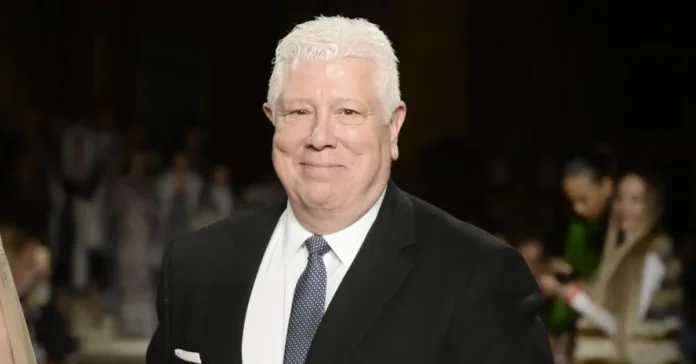Dennis Basso walks into any room wearing confidence like his signature fur coats. The fashion designer has turned luxury into cold, hard cash over four decades. But what’s the real Dennis Basso net worth figure that everyone’s talking about?
This designer didn’t just create beautiful clothes—he built a financial empire worth studying. From celebrity red carpets to QVC stages, Basso’s money moves tell a fascinating story. We’re breaking down exactly how much he’s worth and the smart strategies that got him there.
Current Dennis Basso Net Worth in 2025
The Dennis Basso net worth sits at approximately $14 million as of 2025. This number comes from multiple reliable sources tracking celebrity wealth. It’s not just a guess—it’s based on real business data and industry analysis.
His company generates between $5 million to $25 million annually, according to business reports. That’s serious revenue for a fashion brand in today’s market. The designer personally earns around $102,000 per year from his luxury collections.
Some estimates put his wealth as high as $25 million, but $14 million appears most accurate. This figure reflects his current assets, business value, and ongoing income streams. It’s the kind of wealth that speaks to decades of smart business decisions.
His annual revenue reaches $14.4 million from various sources. That’s not just from selling expensive dresses—it’s from building multiple income streams. Smart entrepreneurs don’t put all their eggs in one designer basket.
How Dennis Basso Built His Fashion Fortune
Basso’s wealth story started in 1983 with one breakthrough moment at the Regency Hotel. Ivana Trump placed a notable order that launched his career among New York’s elite. Sometimes one big client changes everything.
The designer operates from a massive 30,000 square foot factory in Long Island City. This strategic investment in manufacturing lets him control quality and maintain his “Handmade in New York City” brand promise. Owning your production means owning your profits.
His 40-year career trajectory shows remarkable staying power in fashion’s fast-changing world. Many designers come and go, but Basso figured out how to evolve while keeping his signature style. That’s the difference between a trend and a business empire.
Basso’s smart move was expanding beyond just high-end couture into accessible luxury. His business model doesn’t rely on selling $50,000 coats to ten people. Instead, he reaches thousands through different price points and platforms.
The QVC Partnership That Changed Everything
Basso’s 22-year partnership with QVC represents his most brilliant financial move. This collaboration significantly expanded his market reach to everyday Americans seeking luxury-inspired designs. Television shopping opened doors that runway shows alone never could.
Industry experts note that Basso’s authentic on-camera presence makes him particularly successful in this format. He doesn’t sound like he’s reading a script—he genuinely loves talking about fashion. That authenticity translates directly into sales numbers.
His recent collaboration with QVC’s “Age of Possibility” campaign targets the underserved 50+ demographic. This group has serious purchasing power, and Basso was smart to recognize this market gap. While other designers chase youth, he courts wisdom and wealth.
Celebrity Clientele Driving Brand Value
Dennis Basso’s celebrity client list reads like a Hollywood A-list party invitation. Elizabeth Taylor, Meryl Streep, Nicole Kidman, and Jennifer Lopez have all worn his designs. When A-listers choose your clothes, your brand value skyrockets immediately.
Political figures like Michelle Obama and Hillary Clinton have also chosen Basso designs for important events. Political fashion choices get analyzed by millions of people worldwide. That’s free advertising money can’t buy.
His designs appeared in major Hollywood films including “Chicago,” “The Devil Wears Prada,” and “Nine.” Movie placement reaches global audiences and creates lasting brand associations. Every time someone watches these films, they see Basso’s work.
Entertainment industry connections provide steady income through custom designs for red carpet events. Celebrities need new looks constantly, and they pay premium prices for exclusivity. It’s a reliable revenue stream that keeps growing.
Premium Retail Locations and Strategic Investments
Basso’s retail empire spans some of the world’s most expensive real estate. His Madison Avenue flagship occupies a five-story townhouse spanning over 10,500 square feet. This makes it one of the five largest privately owned stores on Madison Avenue.
The Aspen boutique sits inside the prestigious Little Nell Hotel, where wealthy skiers drop serious cash. Aspen attracts people who don’t look at price tags—they look at quality and exclusivity. Perfect customers for luxury fashion.
His Harrods London boutique covers 2,400 square feet in one of the world’s most famous department stores. International exposure through Harrods connects him to global luxury shoppers. London money spends differently than American money.
Empire Outlets represents his first outlet store location in New York City. Smart designers know that outlet stores capture different customer segments without damaging luxury brand perception. It’s about expanding reach while protecting prestige.
Business Strategy and Revenue Diversification
The Dennis Basso business model operates on five distinct revenue streams. High-end couture sales through flagship boutiques target ultra-wealthy customers seeking exclusive pieces. QVC mass market sales reach middle-class shoppers wanting affordable luxury.
Celebrity and film industry custom designs provide high-margin projects with global exposure. International retail through boutiques in key luxury markets captures wealthy tourists and locals. Bridal collections for Kleinfeld salon tap into the profitable wedding market.
Basso’s decision to maintain production in New York City costs more but supports his luxury positioning. His 67-employee operation generates significant revenue per worker, showing efficient business operations. Quality control and “Made in America” appeal justify premium pricing.
Industry analysts highlight his multi-generational appeal as a key success factor. He designs for grandmothers, mothers, and daughters simultaneously. This approach builds long-term customer relationships that span decades, not seasons.
Industry Recognition and Market Position
Dennis Basso joined the prestigious Council of Fashion Designers of America (CFDA) in 2002. This membership represents serious industry recognition among fashion’s elite. CFDA membership isn’t handed out like party favors—it’s earned through sustained excellence.
The Fashion Institute of Technology awarded him an Honorary Doctorate in 2013. Academic recognition validates his business acumen beyond just creative talent. Universities don’t give degrees to flash-in-the-pan designers.
Fashion critics consistently praise his ability to create “timeless yet very much en vogue” pieces. This balance between classic and contemporary keeps customers coming back season after season. Trendy designs fade, but timeless pieces build lasting wealth.
His recent Fashion Week presentations continue demonstrating industry relevance after four decades. Many designers lose steam after a few years, but Basso keeps evolving. Staying power in fashion translates directly to financial staying power.
The Real Numbers Behind Dennis Basso Net Worth
Looking at the complete financial picture, the Dennis Basso net worth of $14 million reflects smart business building over four decades. This wealth comes from diversified revenue streams, not just selling expensive clothes to rich people. Smart money management and strategic investments built this foundation.
His company’s annual revenue range of $5-25 million shows healthy business fluctuation based on market conditions. Fashion businesses naturally have ups and downs, but sustained profitability over decades proves the model works. Consistency beats occasional huge wins.
The designer’s personal salary of $102,000 might seem modest compared to his net worth. But business owners often take smaller salaries while building company value and reinvesting profits. The real wealth sits in business equity and assets.
Basso’s financial success story offers lessons for anyone building a luxury brand. Focus on quality, diversify revenue streams, and never stop evolving with your market. Most importantly, build relationships that last longer than fashion trends.









